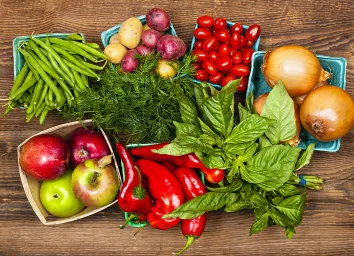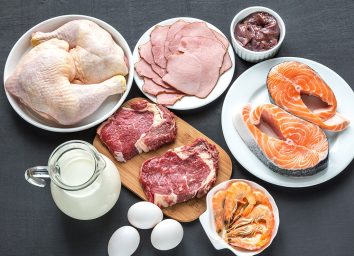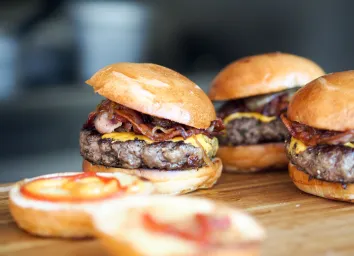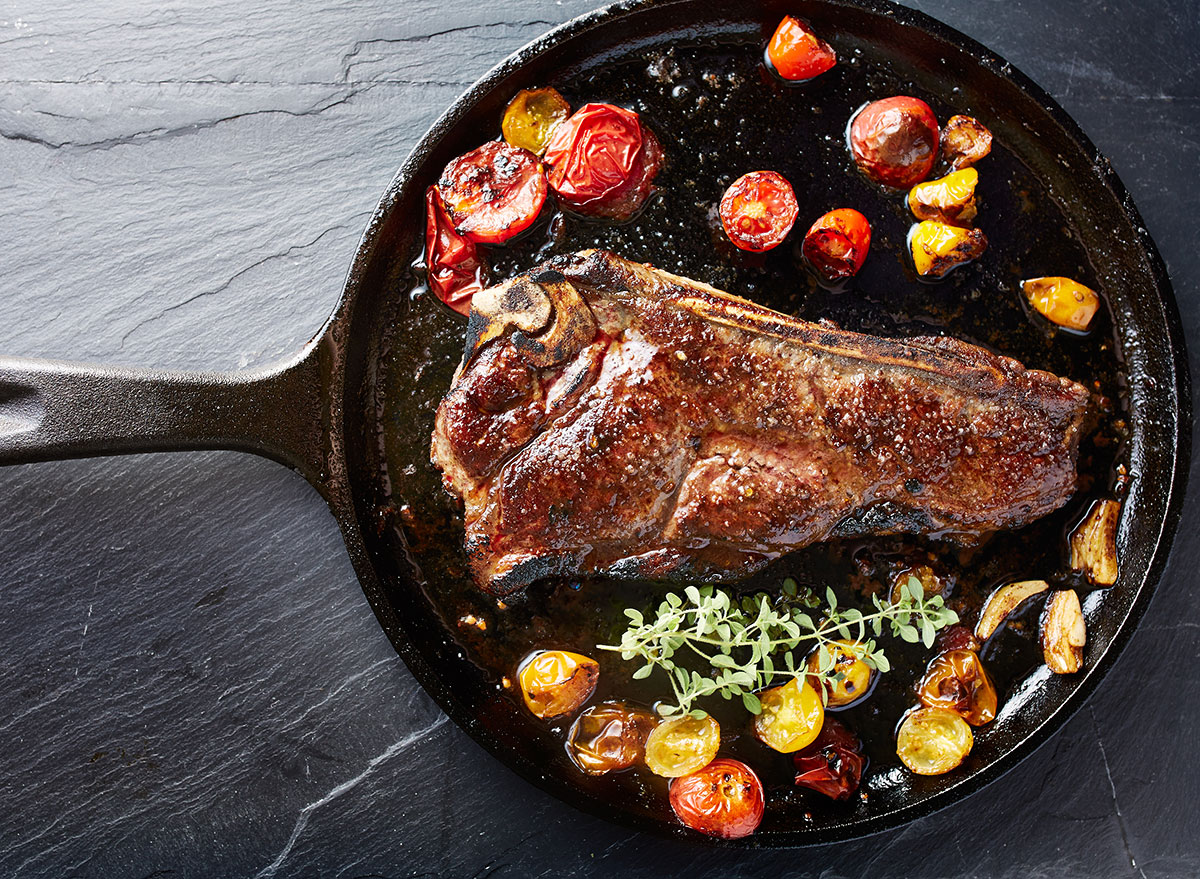
Whether you cook at home frequently or you've taken it up as a new quarantine hobby, you've probably found that cooking meat can be quite challenging. There's nothing better than a perfect steak or burger, but there's also nothing worse than a meat dish that's undercooked, overcooked, or just… off.
Here, experts share the 15 most common meat cooking mistakes that home chefs make and share their tips on what you should do instead. Follow this advice, and your recipes will taste as good as the food from your favorite restaurant. And for more tips, don't miss these 17 Worst Burger Grilling Mistakes.
Mistake: Overcooking leaner cuts of chicken
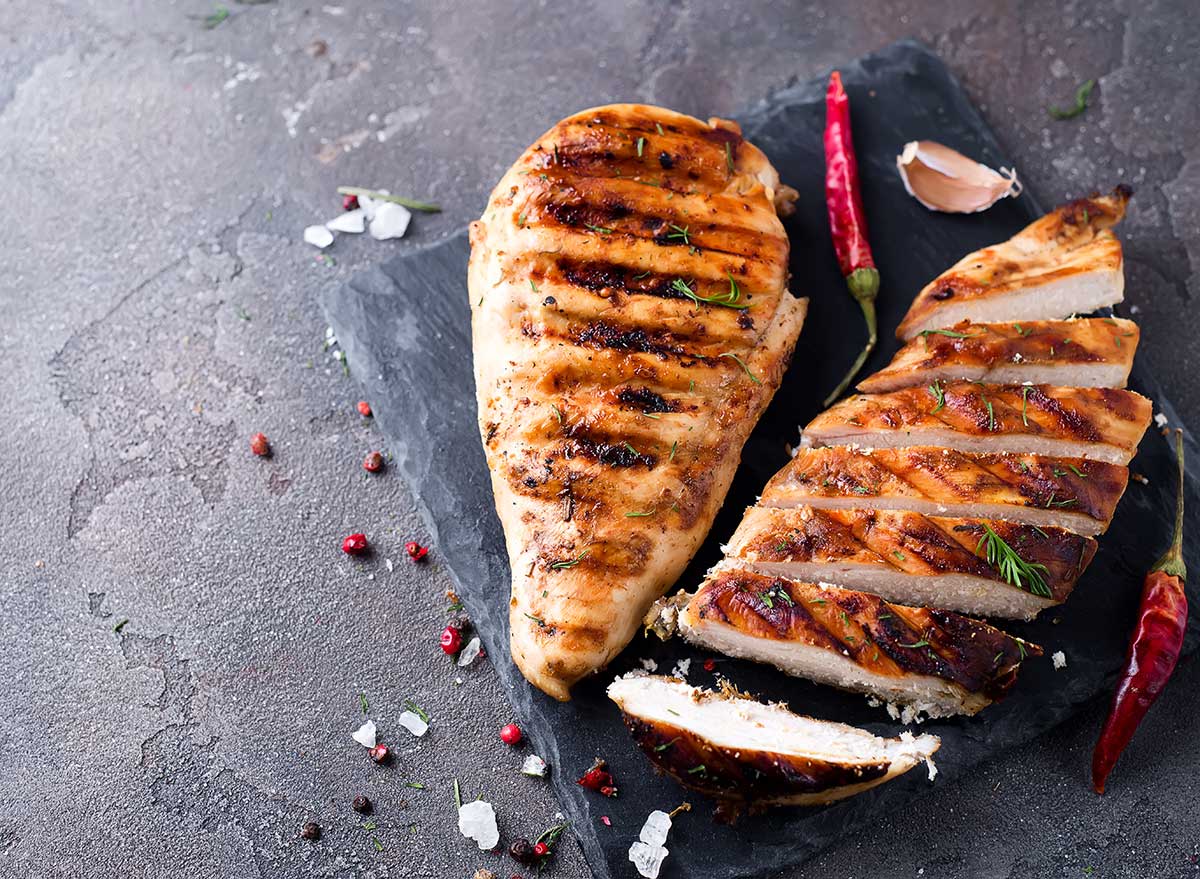
Chicken breast and tenders have very little fat, and they become tough and dry when they're overcooked, says Palak Patel, chef at the Institute of Culinary Education.
How to fix it: "To tenderize the meat, brine the whole chicken breast before cooking," Patel says. The brine should be made with salt, sugar, and any herbs—she notes that an easy ratio is four cups of water to a quarter cup of salt. Then, cut the chicken breast into even pieces so they all finish cooking at the same time.
"Any meat has carryover cooking—sometimes referred to as resting time—when food still continues to cook off the heat source," says Patel. On average, a thin cut of meat like chicken breast will have a few degrees of extra cooking when removed from the heat, so keep that in mind when cooking your chicken.
Mistake: Undercooking the whole chicken
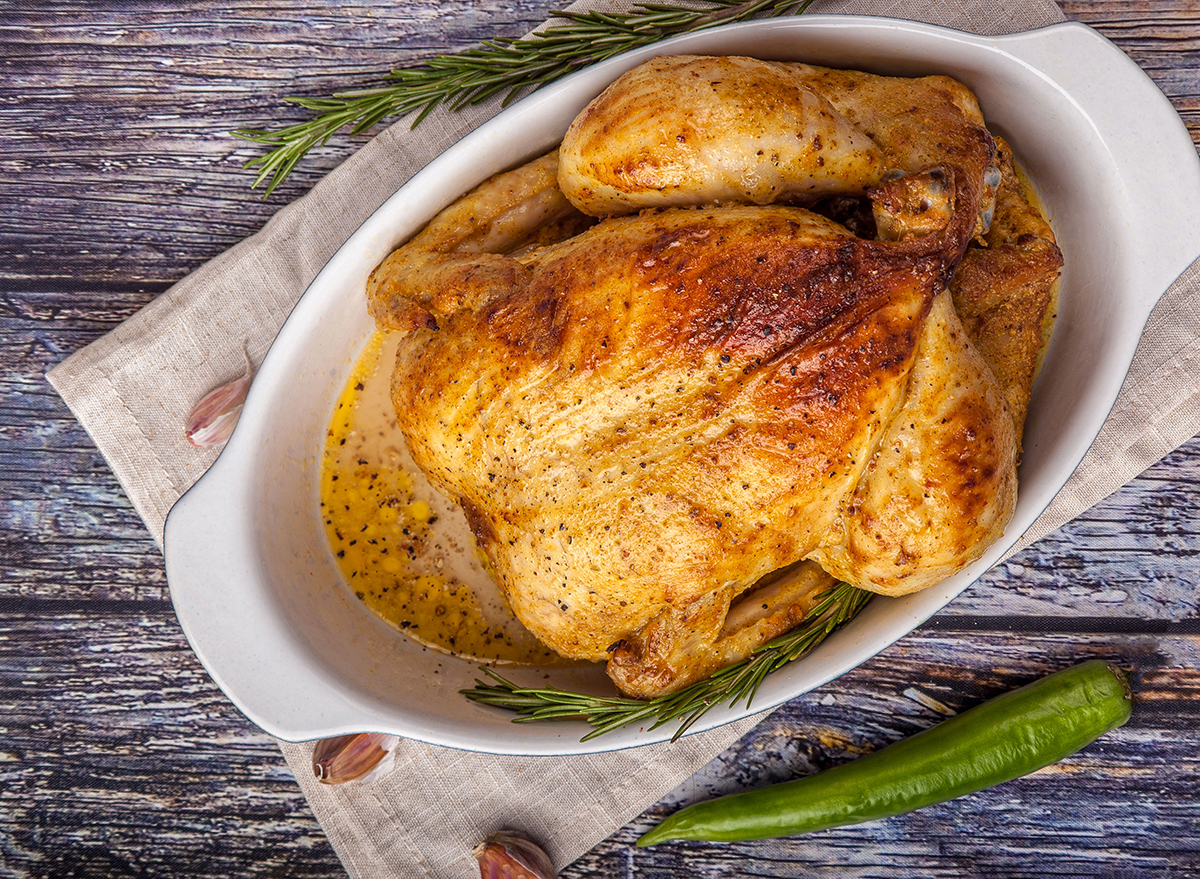
On the flipside, Patel explains that a whole chicken (unlike tender chicken breast) retains more heat, and the outer parts of the whole chicken cook faster than the interior.
How to fix it: Remember that a whole chicken will cook more slowly, and it needs to be rested so the juices distribute evenly. Use a trusty meat thermometer to make sure you're not removing the chicken too early.
Mistake: Seasoning chicken at the wrong time
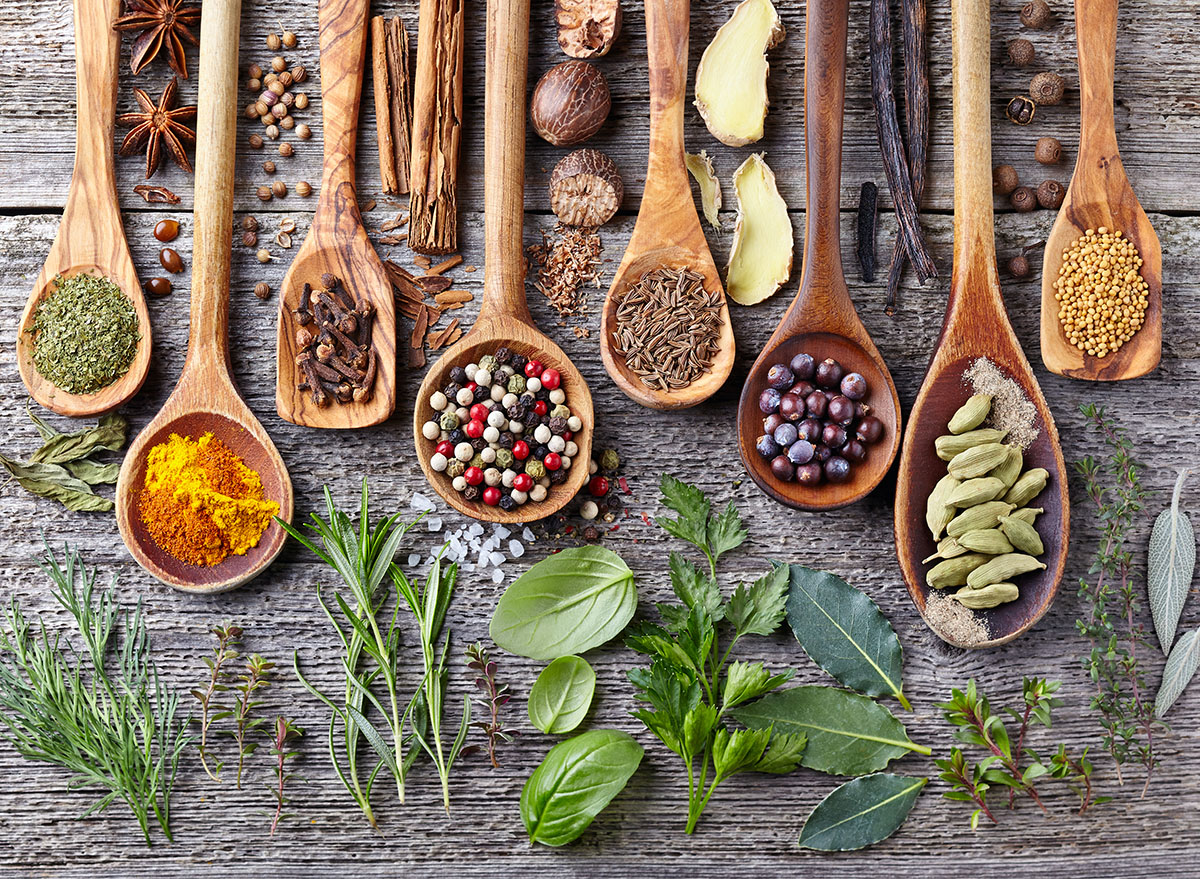
Don't wait to season your chicken until after it's done cooking, Patel advises. If you wait, the meat won't absorb the seasonings in the way it's meant to.
How to fix it: "You want to season the uncooked chicken so the salt, pepper, and spices carry into the meat while it's cooking," says Patel.
Mistake: You're not using the reverse-sear cooking method
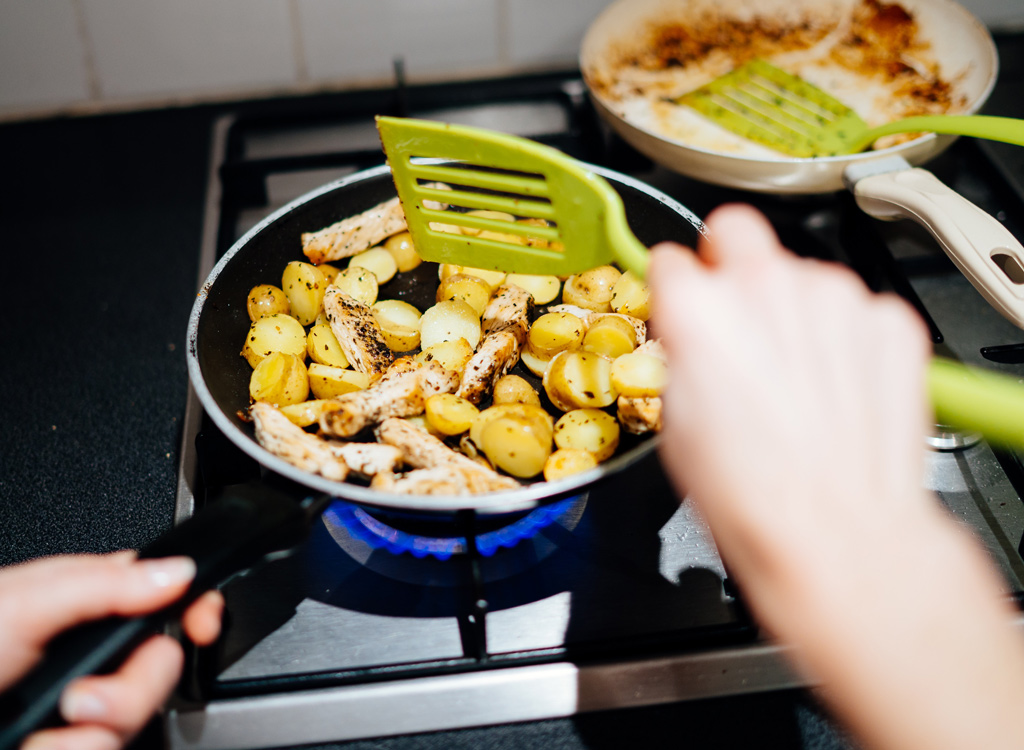
Kevan Vetter, executive chef and director of culinary development for McCormick, says a common mistake is not using the reverse sear cooking method to cook bone-in chicken parts and larger chicken breast.
"Overcooked and dry chicken may be the norm for some, but using the reverse-sear method ensures juicy chicken and crisp skin every time," says Vetter.
How to fix it: Prepare the grill for indirect medium-low heat (275 degrees to 300 degrees Fahrenheit), and preheat the grill by turning all burners to medium. Then, turn off the burners on one side and place the chicken on the unlit side of the grill before closing it.
"Grill for 40 to 45 minutes or until the internal temperature of the thickest part of chicken is 165 degrees Fahrenheit, turning occasionally," Vetter says. "Move the chicken to the lit side of the grill with the skin-side down. Brush with mustard barbecue sauce [and] turn the lit side of the grill to high."
Finally, grill the chicken uncovered for three to five more minutes or until the chicken is charred, turning it over once and brushing it with additional sauce.
Mistake: Adding extra oil to the pan
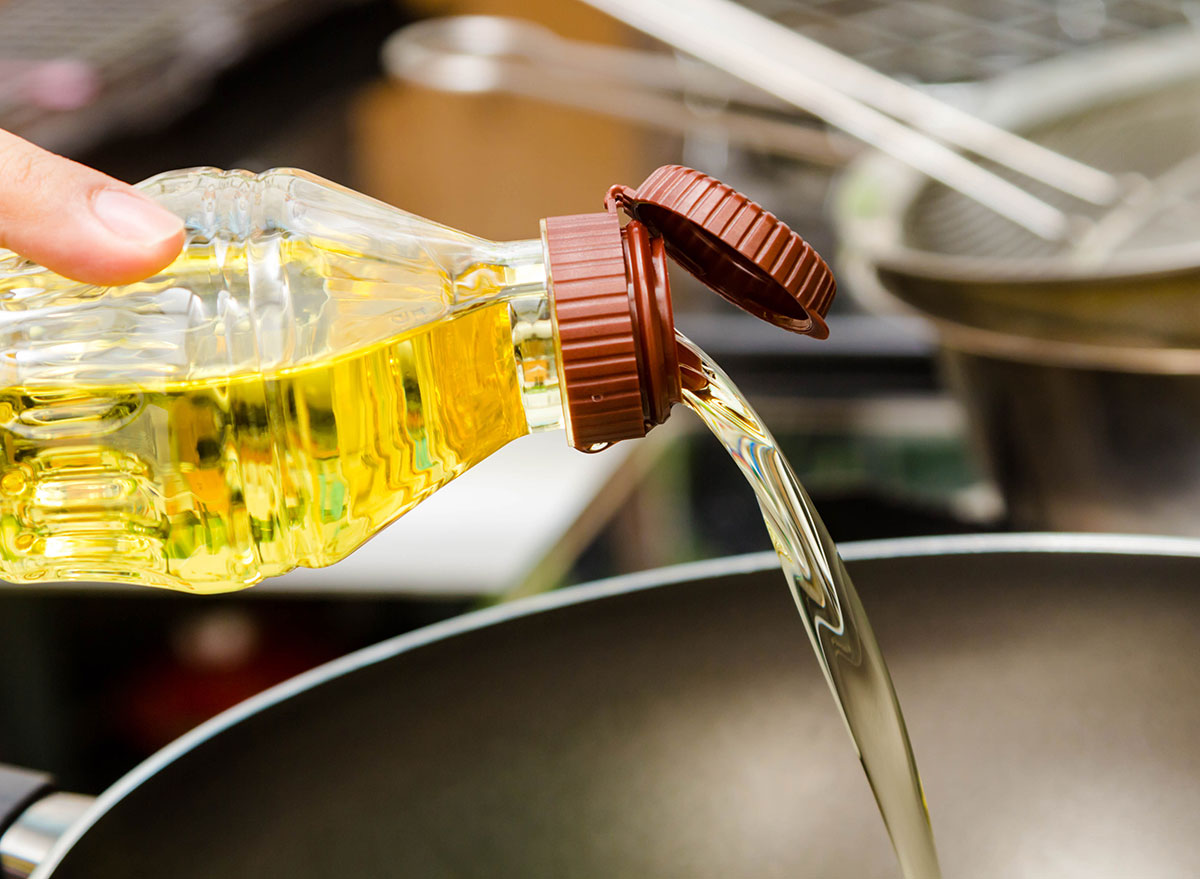
Pam Schwartz, co-founder and managing partner of Ranch 45, a restaurant and butchery in Solana Beach, California, says a lot of people have problems with beef sticking to the grill or the pan. A common solution is to either add extra oil or to use a non-stick pan, but this isn't always the answer, especially if you're trying to get a nice crust on your steak.
How to fix it: "What you need to do is put your pan over medium heat or your grill to 400 degrees [Fahrenheit]," says Schwartz. "Add half a teaspoon or less of oil to the bottom of the pan, and if you're using a grill, don't add any oil."
Once the pan or grill is hot, add your steak. Schwartz warns against trying to move the steak or flip it multiple times because then you run the risk of overcooking the steak. "You only want to turn your meat once," she says. When the steak is ready to be turned, it will easily lift off the bottom of the pan without having to be forced.
"If you find the meat is sticking, let it sit for another minute or two," says Schwartz. "Once the meat is ready to be turned it will release, and a general rule of thumb is about three minutes per inch, per side."
Mistake: Placing the meat in the pan while it heats up
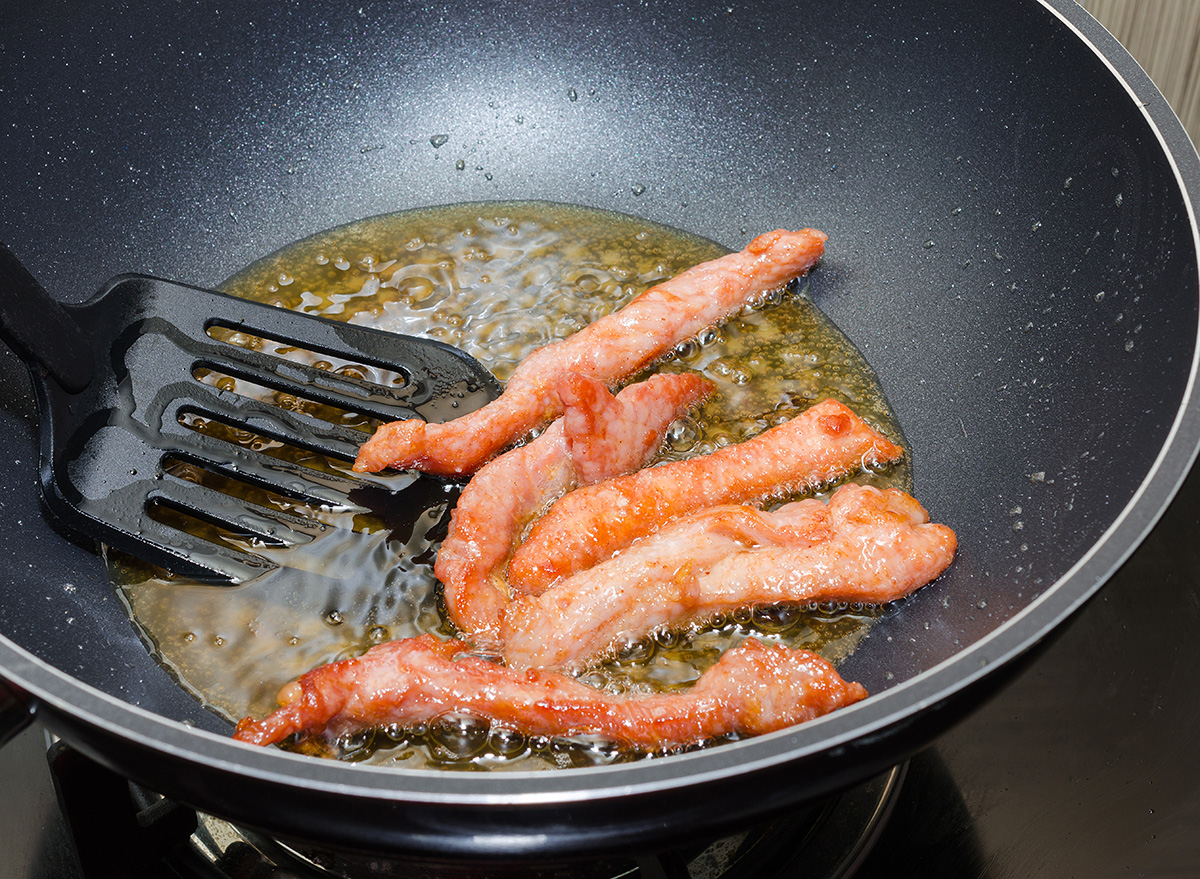
Never place your meat in the pan or on the grill while it heats up, says
Max Hardy, chef and owner of Coop Detroit. Cooking in a pan that's not already hot will gradually dry the meat out.
How to fix it: "When cooking beef, you always want to start with a really hot pan," Hardy explains. "Let your meat get to room temperature before placing it in the pan. When you start with cold meat, it can cool off your pan, not allowing you to get the nice sear that you want." This nice sear is what locks in the meat's flavors and juices.
Hardy adds that when cooking your beef to the desired temperature, you should allow it to rest for a few minutes so the juices won't leave the meat. "Allowing it to rest will help lock in more flavor and creates a succulent piece of meat," he says.
Mistake: Resting steak on the counter before cooking
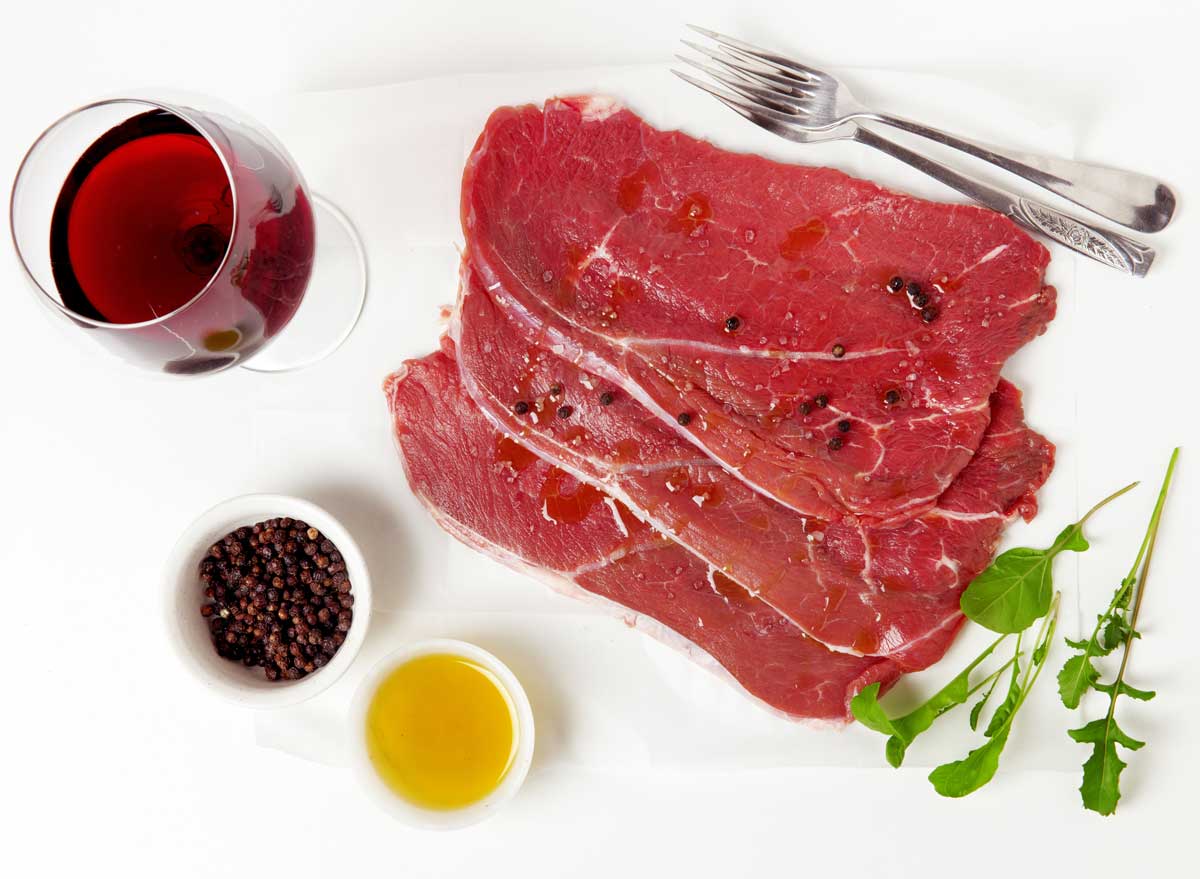
"Letting the meat rest for one to two hours before cooking doesn't really do anything to the cooking process," says Patel. "In fact, there's a risk of having the meat temperature be in the 'danger zone,' and it creates a grayish color on the steak when cooked." Furthermore, resting steak creates moisture on the outside of the meat and, when cooked, it causes the meat to steam instead of sear.
How to fix it: Start by putting the steak in a low temperature in the oven, Patel advises. Then sear it in a skillet to get a golden brown exterior and a pink interior.
Mistake: Thinking you can't cook a steak properly without an outdoor grill
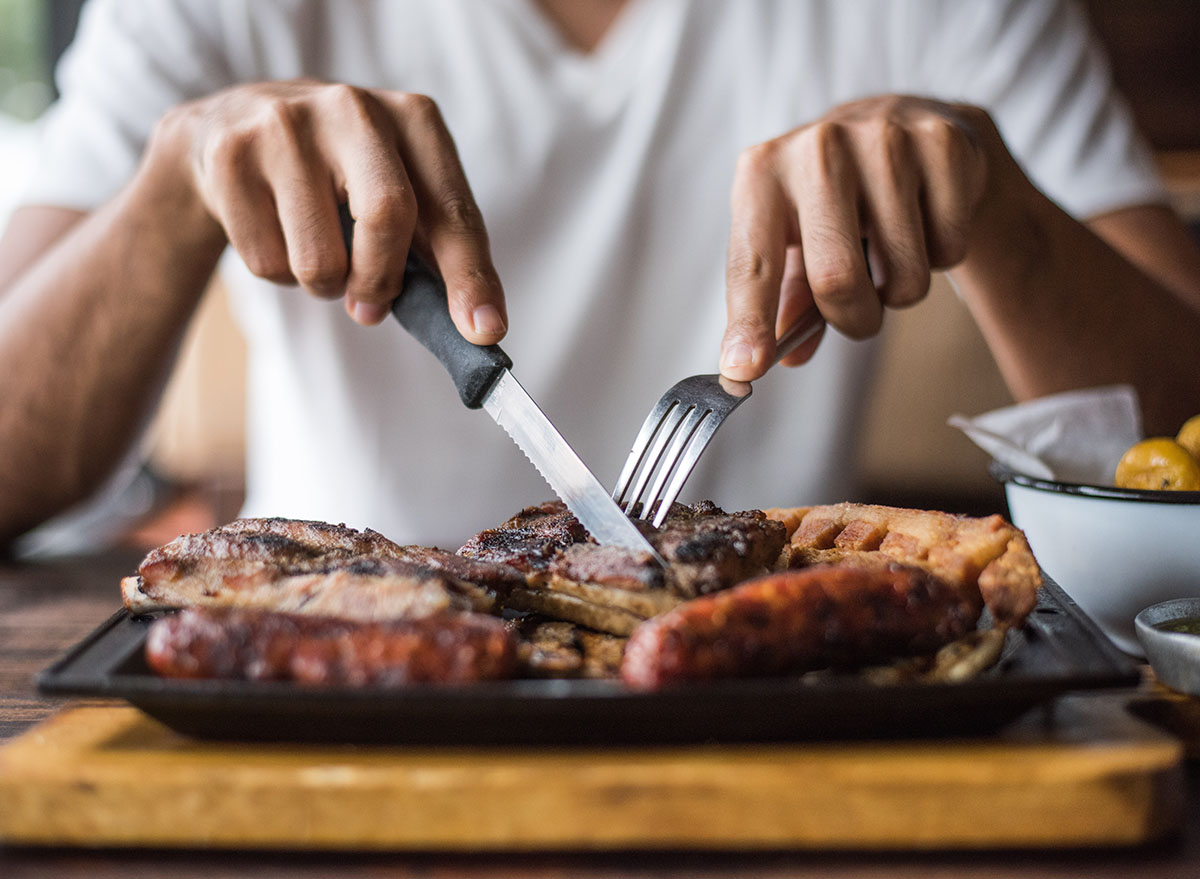
Chef John Manion of El Che Steakhouse & Bar in Chicago says people may be deterred from cooking steak if they don't have an outdoor grill—but you can make a delicious steak without a grill if you know the right way to go about it.
How to fix it: Manion shared his preferred method that he uses when cooking steak at home: Sear the steak in a cast iron (or oven-proof saute pan) and finish in the oven. Then, season your tempered meat and give it a little rub with some high smoke-point oil.
"Get your pan ripping hot and sear on both sides," says Manion. "Don't prod or poke the meat… let it be!" Then place the pan in a hot oven (450 degrees Fahrenheit) and when your steak is approaching the desired doneness, remove it from the oven and baste it over medium heat with butter, herbs, and garlic in the pan. "I set the oven as high as it can go," he says, adding that this method works best for large cuts, such as a 32-ounce bone-in steak, that take a while to cook and render a lot of fat.
Mistake: Not cutting steaks across the grain

Manion says a common mistake is not cutting the steak across the grain. This is particularly important with hanger steaks because if you don't cut across the grain, they'll be tough and hard to chew.
How to fix it: Pay close attention when cutting your steak and make sure that it's cut across the grain.
Now that you know how to cook steak, here are 14 Different Steak Recipes So You'll Never Get Bored.
Mistake: Cooking it for too long
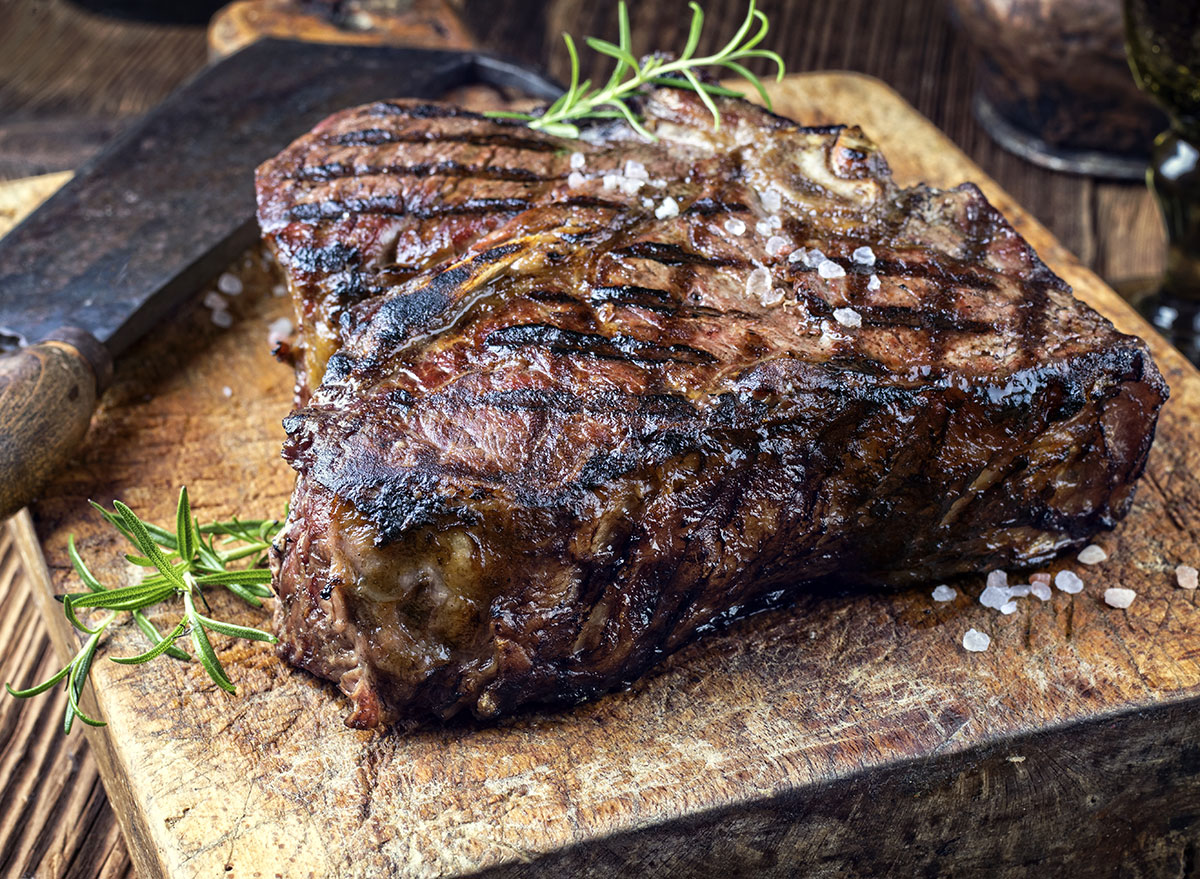
Christophe Poteaux, the chef at Bastille Brasserie in Alexandria, Virginia, says that waiting to take the beef off the heat until it feels done is another common mistake.
How to fix it: Poteaux says the perfect time to take the meat off the heat (whether you're sauteing, grilling, or roasting) is about the moment it feels almost ready but not quite done.
"Typically meat will continue to cook off the heat. The heat will continue to rise up as the steam inside the muscle continues to generate heat," he says. Poteaux also notes that the bigger the meat, the higher the temperature will keep rising.
"If taking temperature, take it off the heat five to 10 degrees before it reaches the optimum temperature of your choice," he says. "And let the meat rest for at least 10 minutes, and 30 minutes for a large roast."
Mistake: Not using a digital thermometer when cooking steak
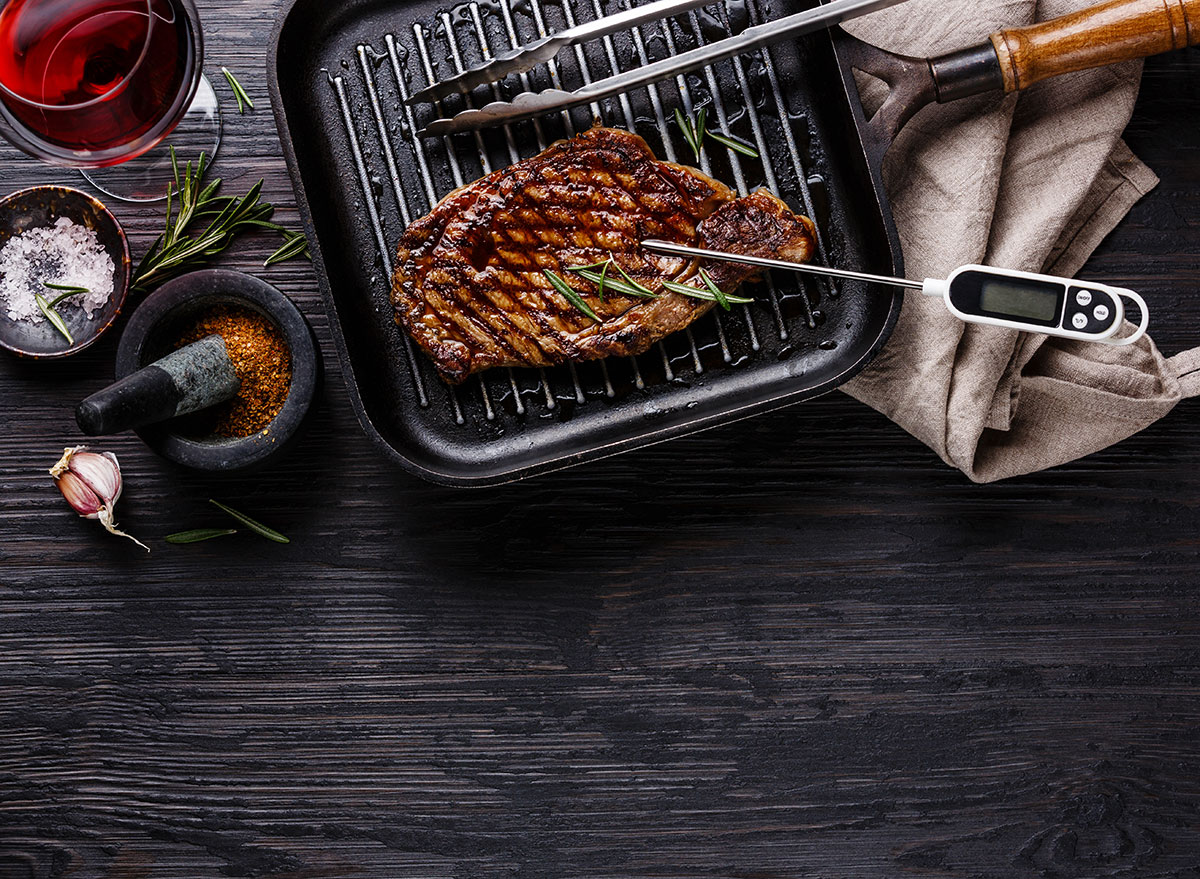
John Bedford, a former sous-chef and founder and editor of Viva Flavor, says that not using a digital thermometer when cooking steak can destroy the entire cooking process because it's crucial to get the meat out of the pan at exactly the right time.
How to fix it: "My list of true essentials for the kitchen is quite conservative, but a digital thermometer is a must-have," says Bedford. He adds that you don't have to spend a lot of money—a perfectly serviceable digital thermometer can be found for around $15, and it will pay off in far superior steaks in the long run.
"The second you hit the desired temperature for your preferred doneness, get it out of the pan and under foil for five minutes of resting," Bedford says. "Don't skip this step, as it provides time for those rich juices to be redistributed throughout the meat and complete the cooking process."
Mistake: Using the wrong oils when cooking seafood
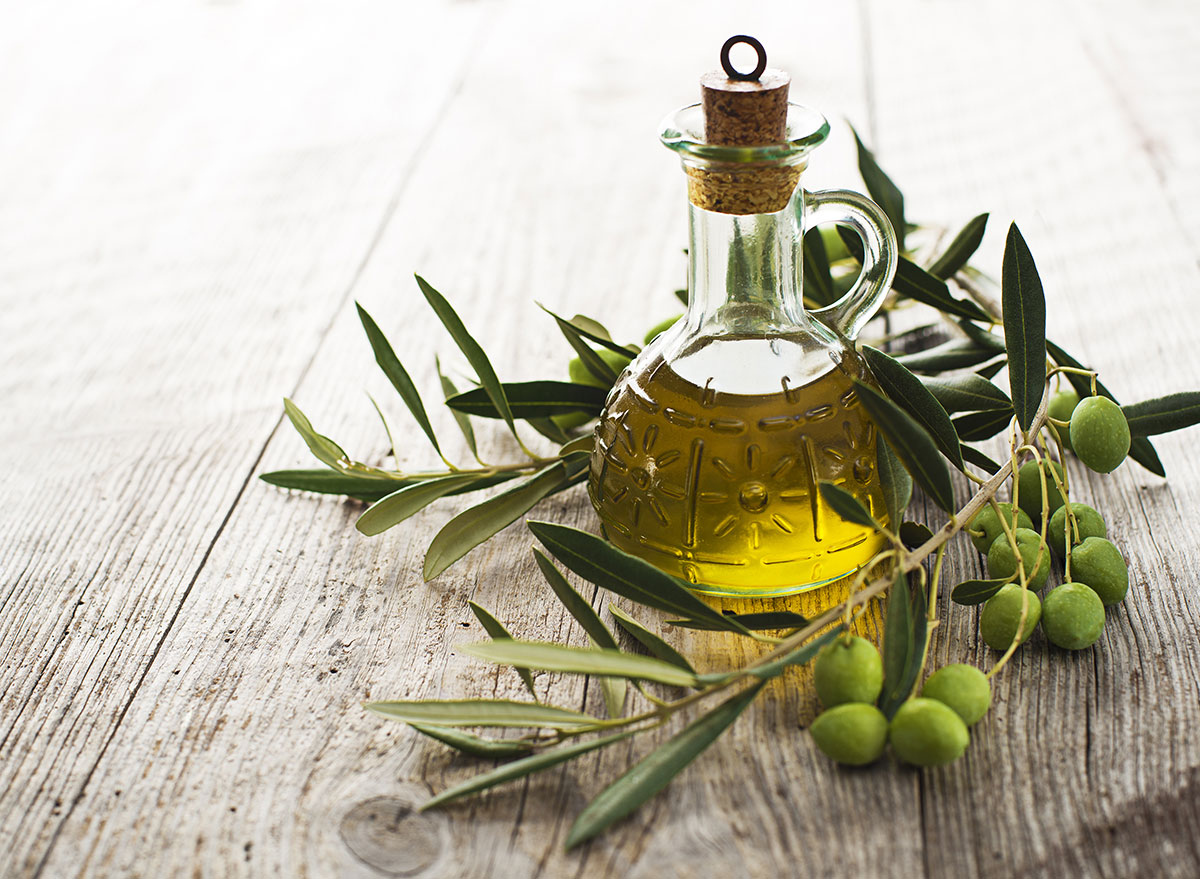
John Livera, consulting chef for the Norwegian Seafood Council in the United States, says it's key to use the correct oil when cooking seafood. He notes that people love the taste of extra virgin olive oil, but it's terrible when you add intense heat to it.
"Oils like extra-virgin oil that have a low smoke point (temperature when the fat or oil begins to burn, represented by blue smoke and not the good blue smoke when barbecuing) do not allow for proper searing of the meat or skin of the fish," Livera says. "Instead, you end up steaming your protein."
How to fix it: Use an oil with a high smoke point, like regular olive oil, canola oil, or peanut oil. Using these types of oils raises the temperature high enough for the perfect sear, which comes from the caramelization of the natural sugars in the seafood.
Mistake: Cooking fish to flaking before removing it from the grill
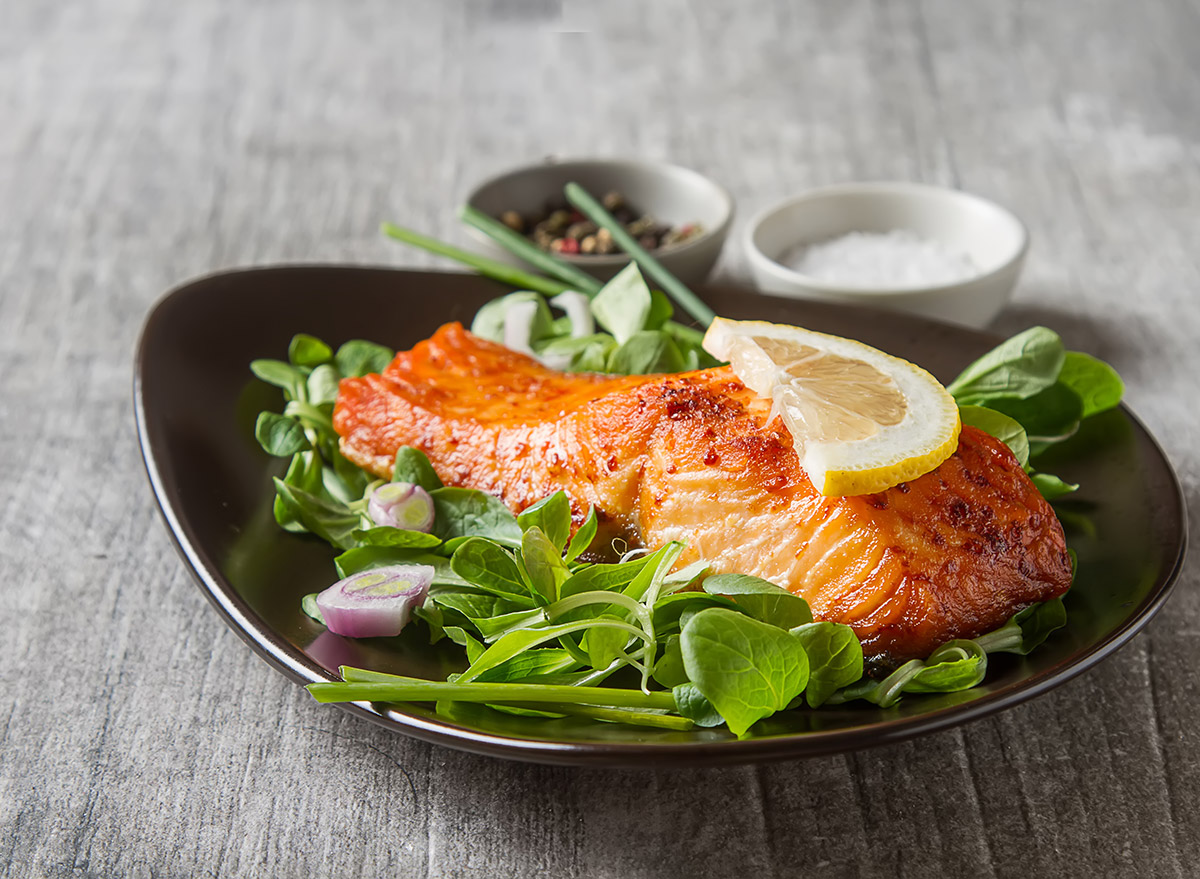
"One of the most important parts of cooking is the carry-over cooking time/resting time once the fish is removed from the grill," says Livera. He phrases it as an analogy: Think of this final step as braking for a stop sign. If you pull your foot from the accelerator and immediately apply the brakes, it's not good for you, the passenger, or for the car's equipment. But if you gently apply your foot to the brakes, allowing time for smooth deceleration, you come to a smooth stop.
How to fix it: Don't immediately "apply the brakes" when stopping your grilling time. Livera says that if you pull a salmon steak off the grill and cut it, it will look raw in the center and won't "flake" well.
"But if you cover the salmon and allow it to rest, the food finishes cooking off the direct heat, the temperature dissipates, and the protein relaxes, enabling a beautifully cooked piece of fish with a silky texture that gently flakes," he says.
Mistake: Using dry, over-cooked ground turkey
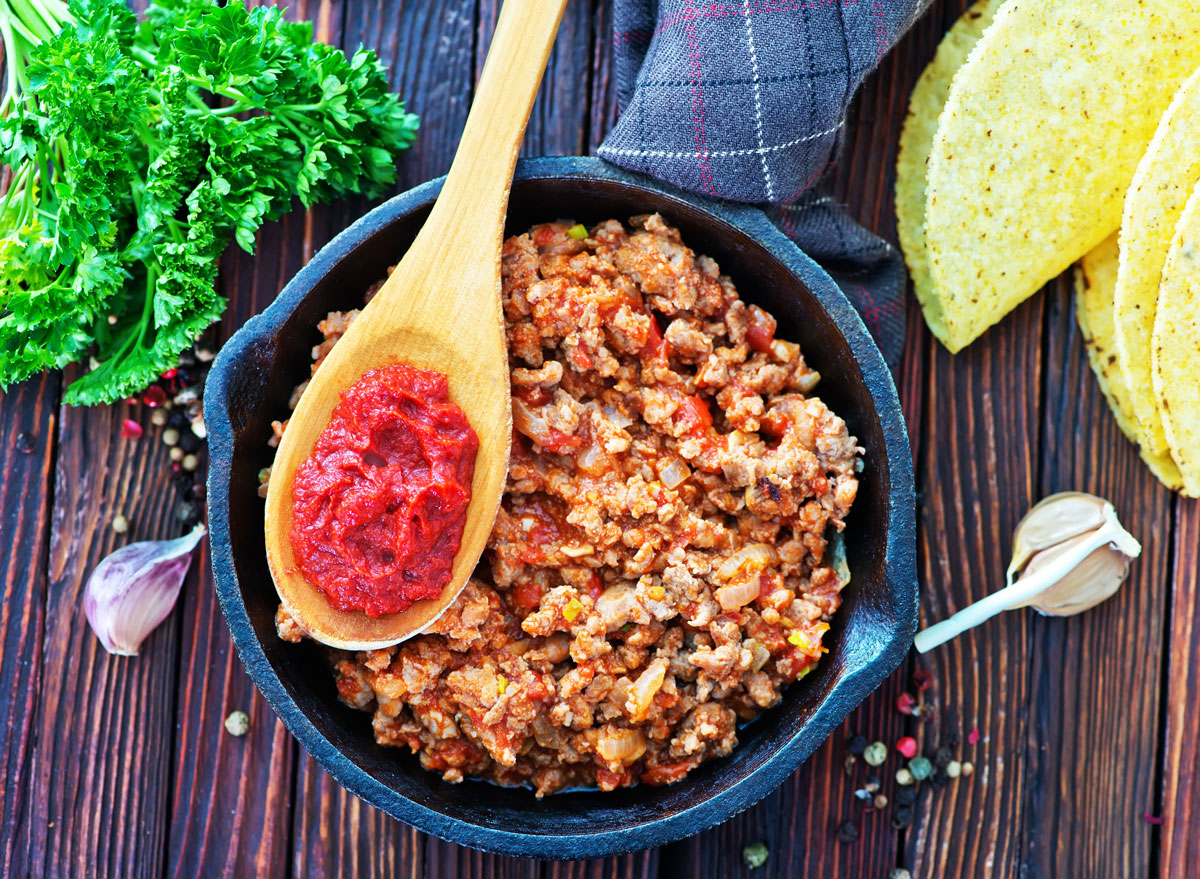
Patel advises against cooking with ground, lean turkey. It has very little fat content or flavor, and you'll likely end up with a bland dish.
How to fix it: "I recommend mixing lean white ground turkey with darker meat to build a better fat ratio," says Patel.
Mistake: Overworking your turkey meat
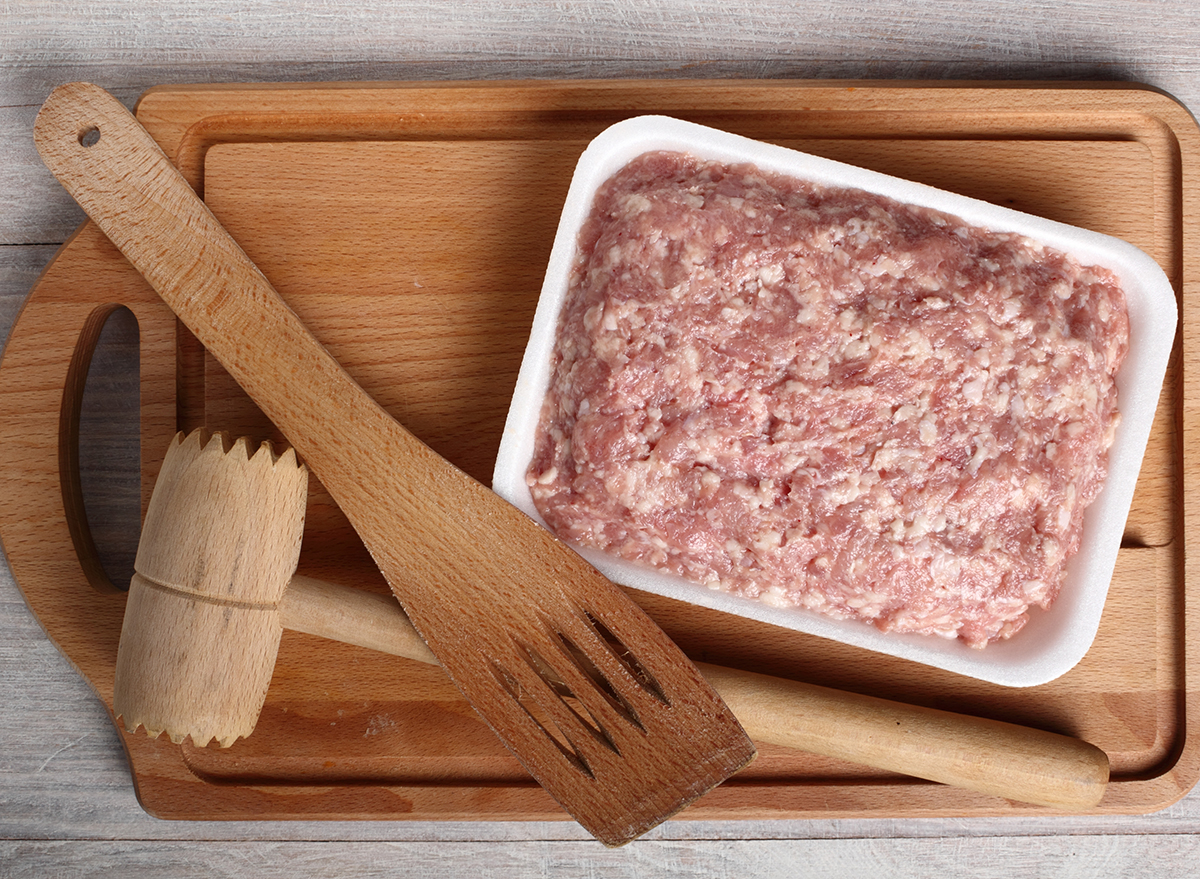
"Resist the urge to overmix the meat with spices and seasoning," says Patel. She explains that this causes the meat to dry out and toughen when cooked.
How to fix it: Patel recommends grating a small onion into the mixture for additional moisture during cooking.
Now that you know how to work with ground turkey, try it out in one of these 36 Healthy Ground Turkey Recipes.
